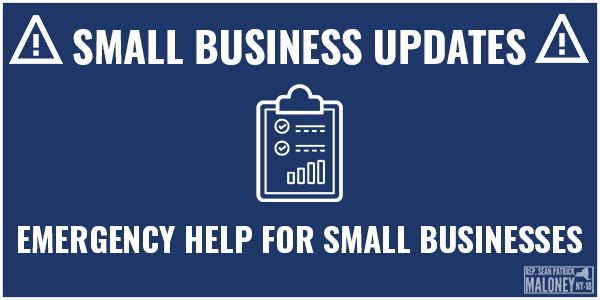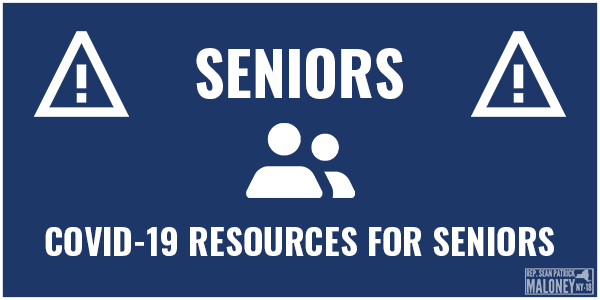CORONAVIRUS EMERGENCY RESPONSE
HUDSON VALLEY RESOURCES
PHONE
New York State Coronavirus Hotline:
1-888-364-3065
Orange County Health Department:
845-291-2332
Westchester County Department of Health:
914-995-2000
Putnam County Department of Health:
845-808-1390
Dutchess County Health Department:
845-486-3400
New York’s Reopening Phases:
Phase 1:
Construction, manufacturing, and some retail for curbside pickup will reopen, and essential businesses will continue to operate as normal. Social distancing guidelines are still in effect and wearing a face covering is required. The Hudson Valley moved into Phase 1 on May 26.
Phase 2:
Offices, some in-person retail, vehicle sales and rentals, hair salons and barbershops, and real estate activities are now permitted to resume. Libraries and places of worship will be permitted to reopen with limited capacity, social distancing, and mandatory face coverings in place. Outdoor dining will resume, but folks dining outside will still need to wear masks when they’re not seated and tables must be placed six feet apart. Shopping malls in New York will remain closed for Phase 2 of the reopening process. The Hudson Valley moved into Phase 2 on June 9.
Phase 3:
Phase 4:
Schools, higher education, low-risk arts and entertainment, media production, malls, and gyms may reopen. The Hudson Valley began Phase 4 on July 7.
CDC Risk Levels for Events and Gatherings:
-
Low risk: Virtual-only events and gatherings.
-
Greater risk: Small (in-person or outdoor) gatherings of people who remain 6 feet apart, wear face coverings, don’t share objects, and come from the same local area.
-
Higher risk: Medium-sized in-person gatherings where folks can remain 6 feet apart and attendees travel from outside of the local region.
-
Highest risk: Large in-person gatherings where it’s difficult to remain 6 feet apart and attendees travel from outside of the local region.
NOTE: The Centers for Disease Control (CDC) recommends that folks attending large, in-person gatherings wear masks or face coverings.
Antibody Testing: Testing for COVID-19 antibodies is now available. Antibody testing can help determine who has been infected with COVID-19, even if asymptomatic.
FMI: New York State Antibody Testing Advisory
COVID-19 Testing: Find a COVID-19 Testing Location Near You:
https://coronavirus.health.ny.gov/find-test-site-near-you
As New York reopens, detailed guidance on the state's reopening plan is available at nyforward.gov.
ARE YOU A SMALL BUSINESS OWNER LOOKING FOR HELP?
Click here to visit my small business emergency response page.
ARE YOU A SENIOR LOOKING FOR HELP?
Click here to visit my COVID-19 senior resources page.
TRYING TO FILE FOR UNEMPLOYMENT?
Click here to visit my unemployment insurance information page.
QUESTIONS ABOUT CASH PAYMENTS FOR NEW YORKERS?
Click here to visit my EIP info page
Visit my Consumer Warnings and Safety Tips Page to Avoid COVID-19 Scams
INFO ON CONGRESS'S STIMULUS PACKAGES
Interim Funding Bills
I. Paycheck Protection Program and Health Care Enhancement Act
II. Paycheck Protection Program Flexibility Act
Coronavirus Aid, Relief, and Economic Security (CARES) Act
I. Funding opportunities for local entities and nonprofits
II. Unemployment Information Page
III. F.A.Q. on Student Loans
IV. F.A.Q. on Cash Payments
V. F.A.Q on Small Business Administration Summary
VI. FACT SHEET: How the CARES Act impacts New York State
MORE RESOURCES
CDC: http://www.coronavirus.gov
NEW YORK STATE: https://health.ny.gov/
The CARES ACT delivers for New York:
- $15 billion in aid to the unemployed and expanded guidelines for eligibility and amount received will provide untold relief to New Yorkers.
- $5 billion in direct aid to New York through Coronavirus State and Local Grants. This is additional to the $6 billion in Medicaid relief already made available to the state and the billions accessed through the Major Disaster Declaration.
- $4 billion in direct aid to the state's mass transit system.
- $193 million for Community Development Block Grant (CDBG) COVID Funding.
- $162 million for Child Care and Development Block Grants (CCDBG) Funding.
- $28 million for Low Income Home Energy Assistance Program (LIHEAP) Funding.
- $18 million Center for Disease Control (CDC) Emergency Grant.
New York needs the Heroes Act:
-
The Heroes Act will provide an estimated $34 billion in new funds for New York State, and an estimated $32 billion in new funds for New York’s counties and municipalities, including an estimated:
-
$216 million for Orange County
-
$165 million for Dutchess County
-
$55 million for Putnam County
-
$544 million for Westchester County
-
-
In addition to robust funding for state and local governments, the Heroes Act will support New York workers, small businesses, and families. This bill:
-
Repeals the $10,000 SALT deduction cap for two years, putting more money in the pockets of homeowners in New York.
-
Invests $90 billion in state and local public education, which will help support distance learning initiatives, technology improvements, and health and safety measures for students, teachers, administrators, and support staff.
-
Establishes a $200 billion Heroes’ Fund for health care and essential workers, to ensure our heroes receive the hazard pay they deserve.
-
Commits $75 billion for COVID-19 testing, tracing, and treatment, so we can safely reopen our communities and respond to the virus quickly.
-
Provides another round of $1,200 direct cash payments to qualifying individuals, and expands payment eligibility to all dependents, up to $6,000 per household.
-
Bolsters Small Business Administration emergency grant and loan programs, and strengthens the Paycheck Protection Program by extending deadlines for small business owners utilizing these loans.
-
Extends the weekly, expanded unemployment benefits of $600 to January 31, 2021.
-
Protects our democracy by investing in safer vote-by-mail systems, and supports the United States Postal Service
-
Ensures additional support for New Yorkers, including:
-
Health security – with COBRA subsidies and a special enrollment period in the ACA and Medicare exchanges for those without insurance.
-
Workplace security – requiring OSHA to ensure that all workplaces develop science-based infection control plans and preventing employers from retaliating against workers who report problems.
-
Housing security – with $175 billion in new support to assist renters and homeowners make monthly rent, mortgage and utility payments and other housing-related costs.
-
Food security – with a 15% increase to the maximum SNAP benefit and additional funding for nutrition programs that help families put food on the table and support our farmers.
-
Responses to Your Frequently Asked Questions:
The following responses are based on the information provided to us and the general public by the NY Department of Health along with guidance offered by the CDC.
What is the range of symptoms of COVID-19?
Reported symptoms due to infection with the virus that causes COVID-19 have ranged from mild to severe. Symptoms can include fever, cough or shortness of breath.
How long before symptoms of the virus appear?
The Centers for Disease Control and Prevention (CDC) believes at this time that symptoms of COVID-19 may appear between two and 14 days after exposure.
What happens if I’ve been exposed or diagnosed with the COVID-19?
What is home self-monitoring?
What if I need to leave home to receive medical care for a chronic illness or other issue?
I have a trip planned. Should I cancel it?
I need help getting a refund for my airline or cruise travel. What do I do?
For more information on COVID-19, visit cdc.gov/coronavirus.




